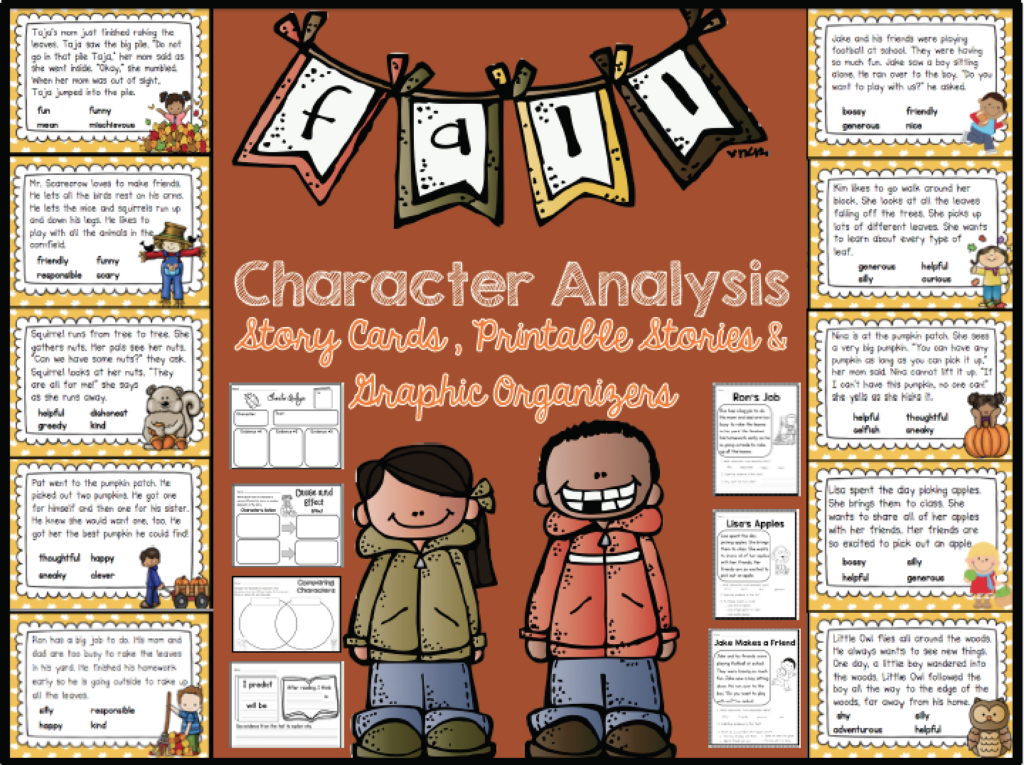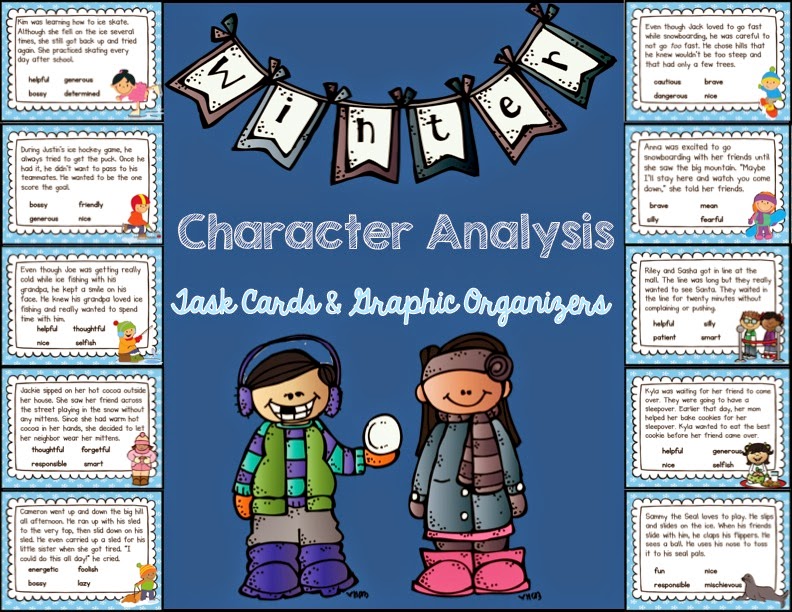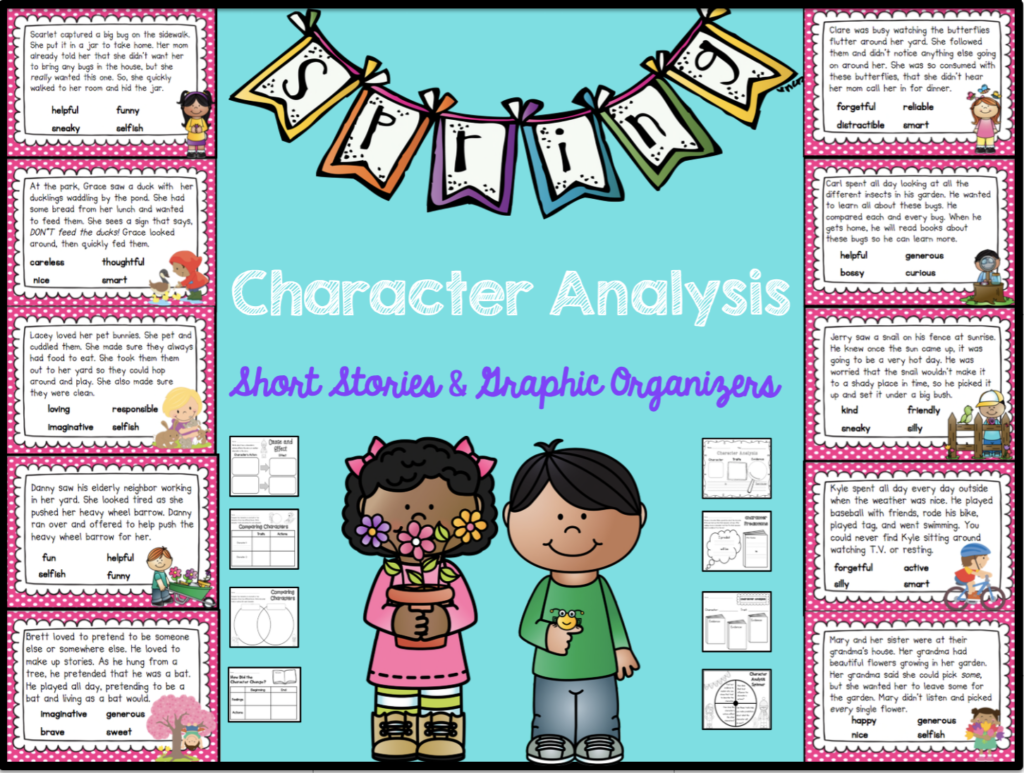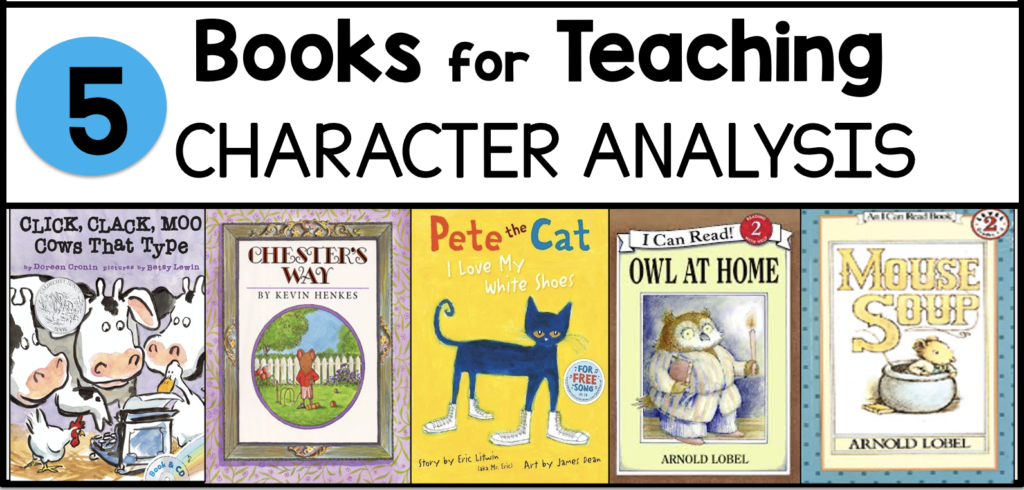I have always loved to dive deep into picture books. We are so lucky to have so many wonderful books at our fingertips! Practically every picture book has a great comprehension lesson waiting to happen. Between school and reading to my own kids, I’m doing a fair amount of reading! Usually when I read a picture book, a bunch of teaching thoughts jump into my head. Occupational hazard? I have to jot down some notes on a sticky afterward, so I often have random notes around my house. Ha! A couple years ago, I blogged about character analysis. I decided it was time to add a little.
For our younger kids, I basically focus on describing a character and then finding evidence to support our reasoning. This goes along with the close reading philosophy. We read the book. We ask the question. We reread to find evidence to support our answer.
I usually introduce the concept by showing students a list of words to describe people or characters. Then I ask my class to describe me. After making a small list (maybe 2 or 3 words), I ask them to prove it. Together, we think of evidence to prove that actually I am how they described me.
Now, we move on to picture books. I put together a list of some books I’ve been reading lately that lend themselves to a character analysis lesson. The first set is fall-themed and the second set are for any ol’ time.
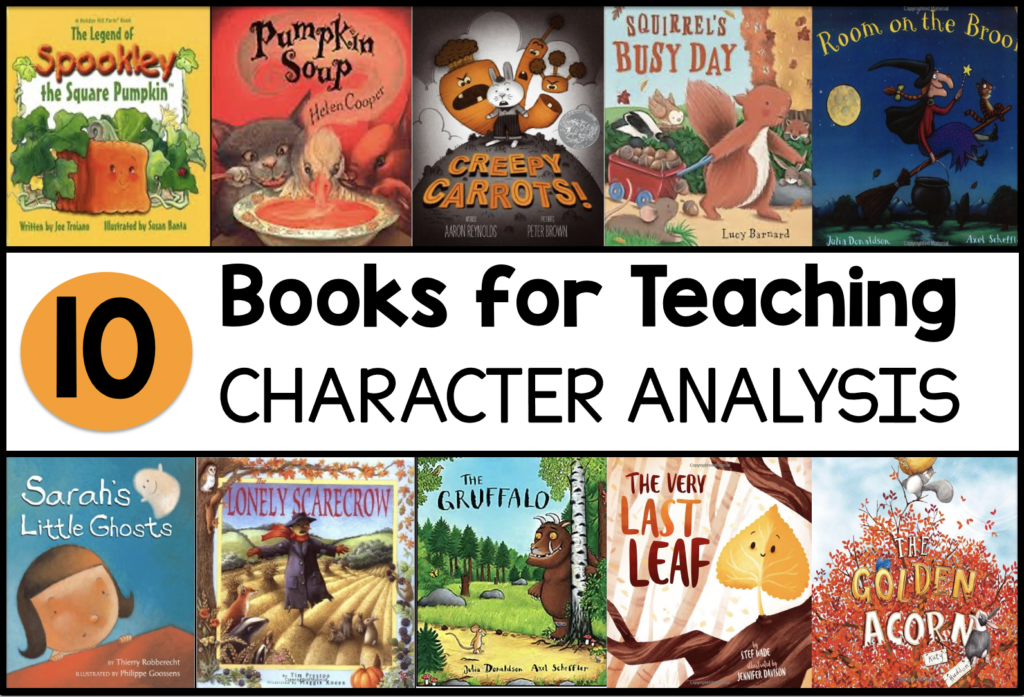
Character Traits
Squirrel’s Busy Day is perfect to use for learning about character traits. You can describe the main character, Squirrel, and his friends. The friends are all helpful and friendly. Squirrel can be described as responsible. Use a graphic organizer like the one below to write about the character traits represented in this book. Spend some time rereading the book to find evidence to support your options about these characters.
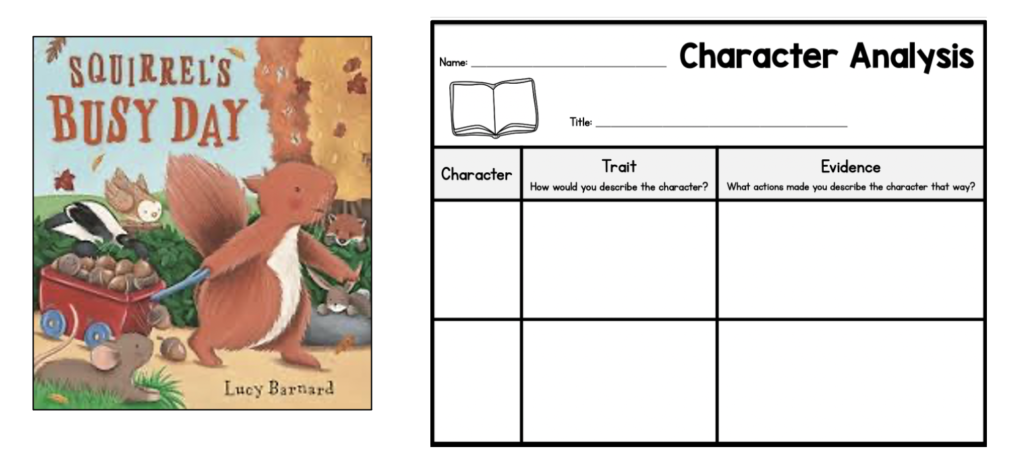
Spookley the Square Pumpkin is always a big hit with all ages! Spookley is teased by his round pumpkin friends until a stormy night when he saves the day.
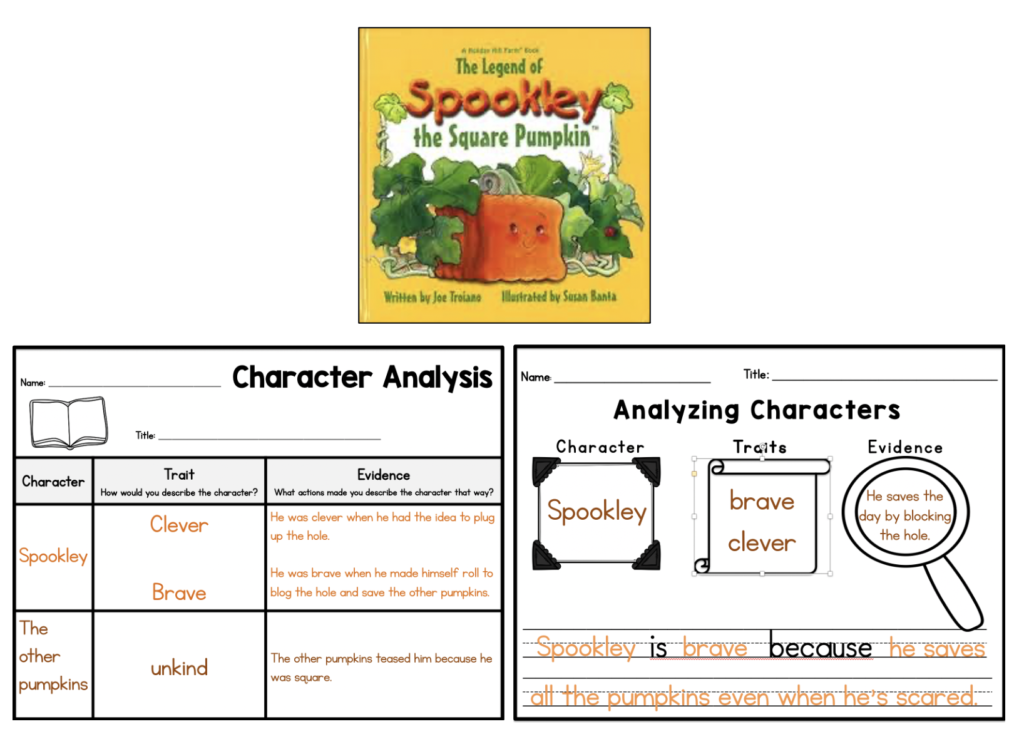
Sometimes you’ll have a character showing lots of evidence of one main character trait like in this story The Gruffalo. With this book, the mouse has one main trait: clever or tricky. Yours students can find plenty of evidence to support that description through the mouse’s
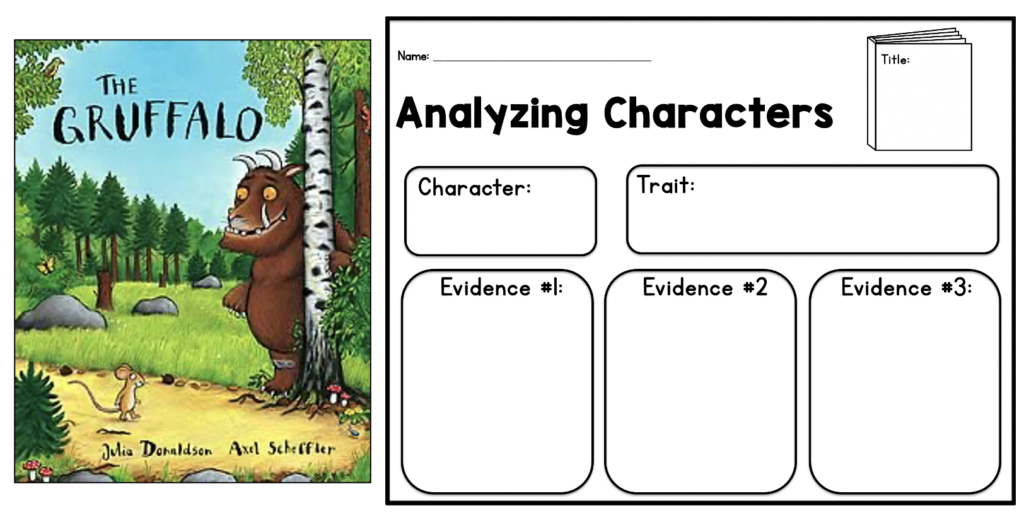
Character Feelings
The Lonely Scarecrow is a great book for the most basic character analysis. The author actually does tell the reader how the character is feeling. This would be useful for when you are introducing the concept. Students can easily identify how the character is feeling in the beginning (and why) and how the character feels at the end. Then, you can discuss why the character’s feelings change.

How Character’s Feelings Affect Actions
Pumpkin Soup is the perfect to use to talk about characters’ feelings. In this book, the characters experience feelings such as sadness, anger, worry, and happiness. Have your studnets use a graphic organizer like this one to write about the feelings of the characters in this book. Reread to find evidence: How does the author show you how the characters are feeling? You could also go into how the characters’ feelings affected their actions.
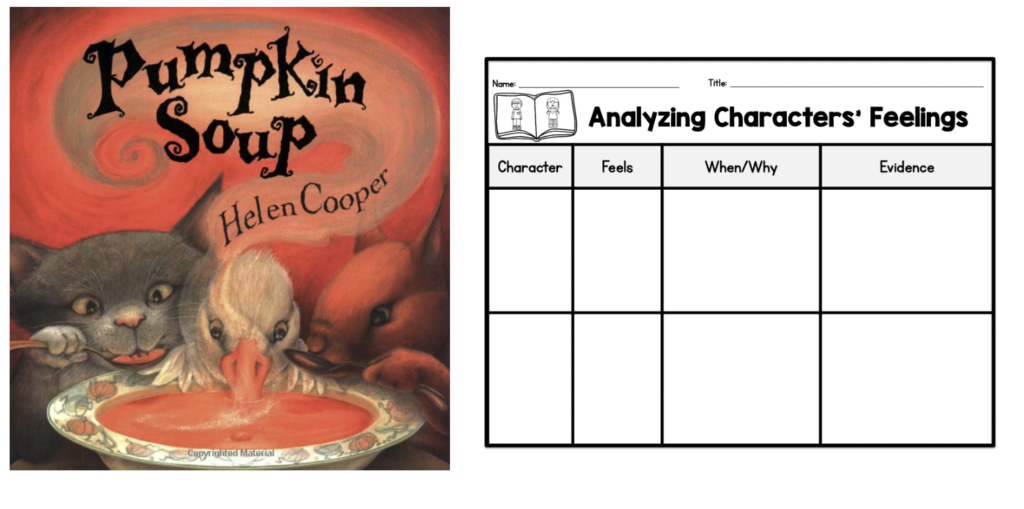
Creepy Carrots is another favorite! This book is perfect for discussing how a characters’ feelings influences his actions. Jasper Rabbit is so happy in the beginning eating carrots from a nearby field. His feelings soon change when he thinks he is being followed by creepy carrots! His fear influences his actions throughout the book, and ultimately, leads him to make a BIG change. You can either focus on the change in his feelings from beginning to end and how his actions show those feelings (top graphic organizer) or you can focus more on the cause/effect relationship of what actions by another character caused his feelings and actions to change.
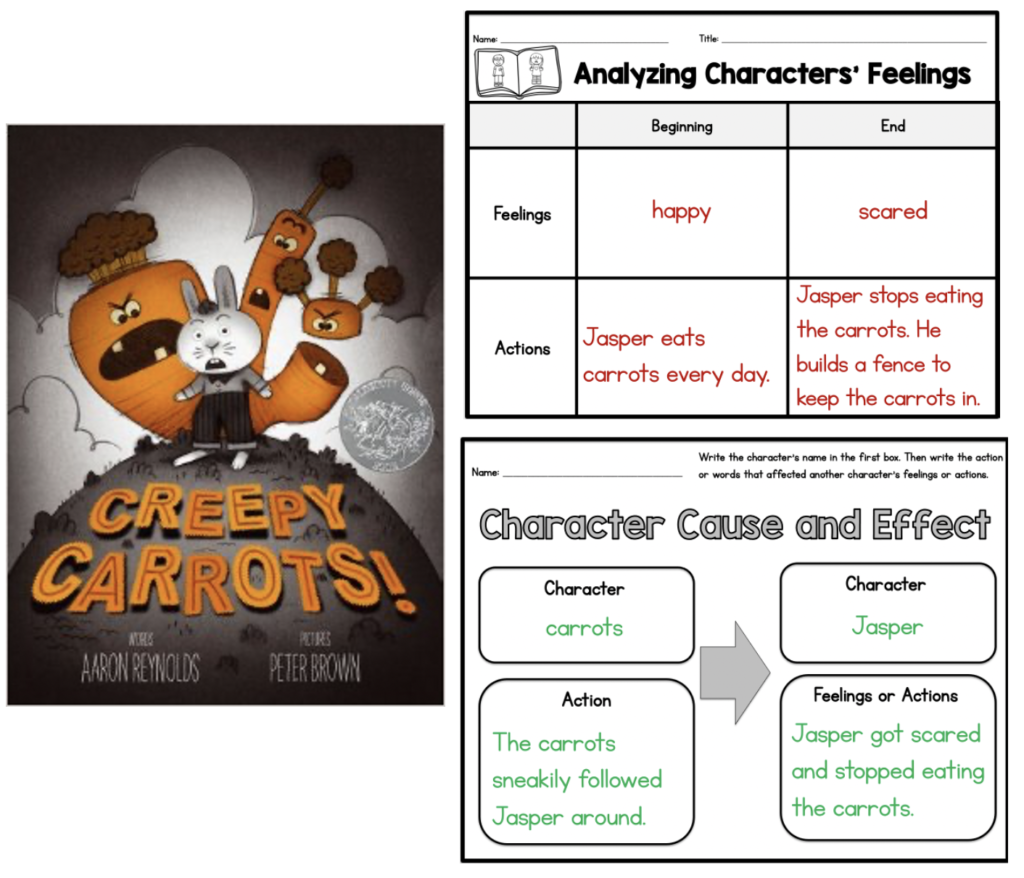
Character Change
In Sarah’s Little Ghosts, Sarah is dishonest with her mom in the beginning. A little “ghost” follows her until she is convinced that telling the truth is the way to go. Use this book to show a character’s traits may change. Discuss what events led to the character change. Reread to find evidence for why you would describe Sarah as dishonest in the beginnings and honest in the end.
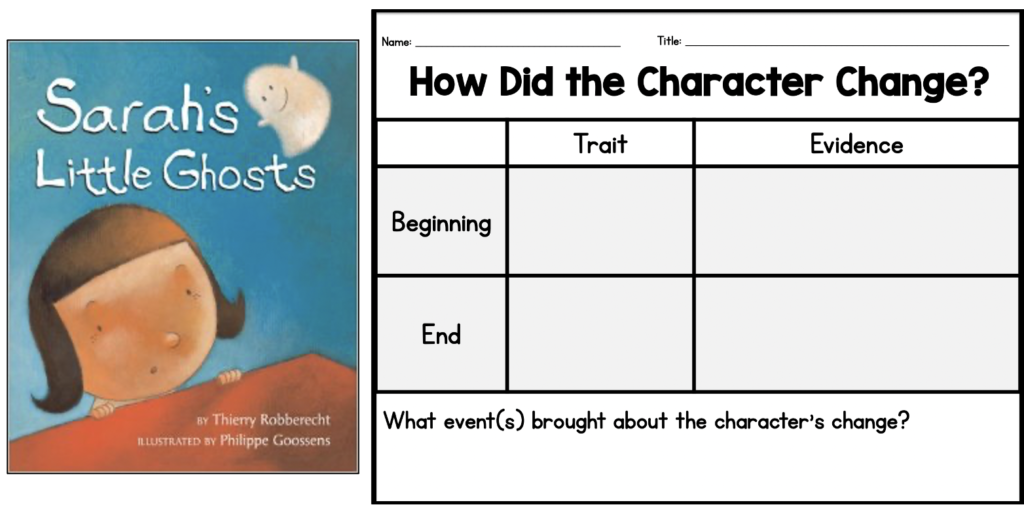
The Very Last Leaf is an adorable book about a leaf who struggles with anxiety, wanting to be perfect, and fitting in. These are all feelings that our students can relate to so you can really dive deep into this one. For this book, you can explore the feelings Lance the Leaf has throughout the story (confident and happy to anxious and scared). You can explore the reason behind those feelings. You could also choose a trait to describe Lance and then look for actions or words that back up your claims.
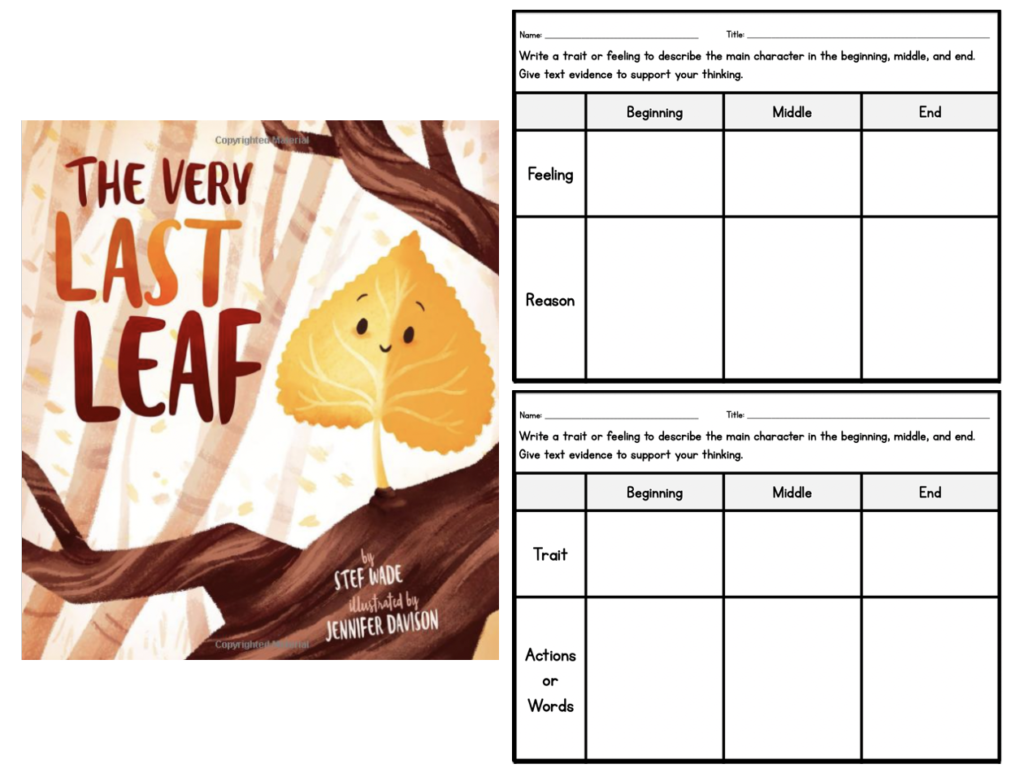
The Golden Acorn is another new one (updated from this original post). This book has a great lesson about friendship. Squirrel wants to win the Golden Nut Race but this year it is a team event. In the beginning, she is annoyed with her friends who can’t keep up with her. At the end she learns that friendship and teamwork are more important than winning. For this book you can talk about how Squirrel changes from the beginning to the end. You can include Squirrel’s actions and words as well as what she wants most. Then, you can talk about how what lesson Squirrel learns and how that lesson led to to her change.
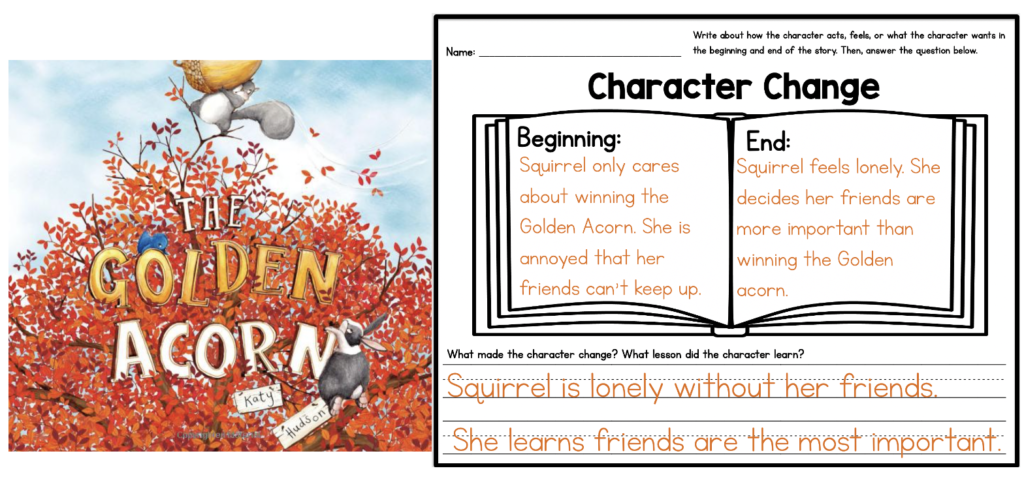
Predicting character traits:
I recently found this book during a Barnes and Noble trip with my kids. My son picked this book out to read. It’s a cute book about friendship, but my son picked it because he thought that the big monster would be scary. He actually turns out to be polite and nice. It gave me this idea:
Have your students predict what trait will be describe the character. Read the story and discuss whether or not the prediction changed you were reading. Ask students what trait they would use to describe the character after reading the book.
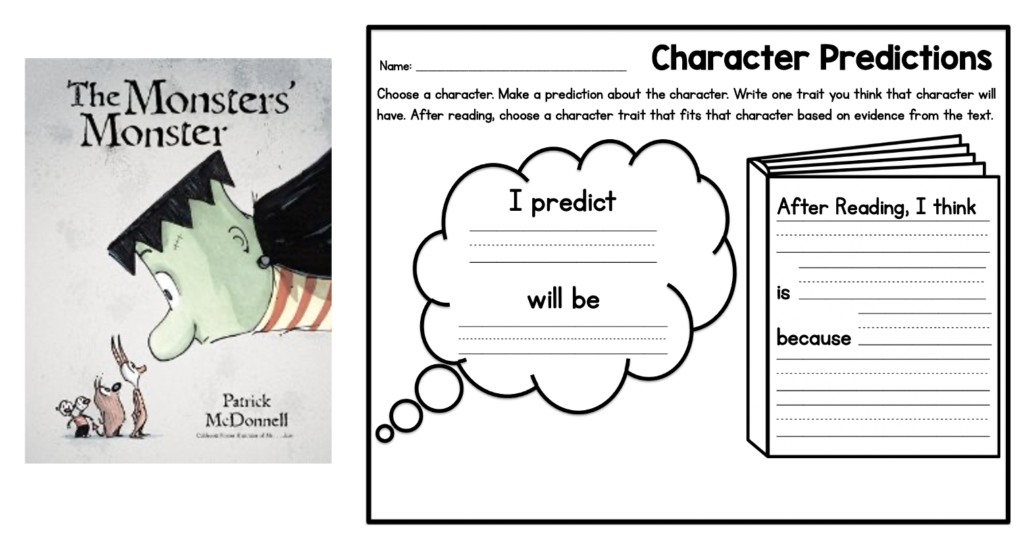
Comparing Characters
Room on the Broom is another classic! This book has a great rhythm to it. This book works well for comparing characters. The witch in this book is generous and friendly because she shares her broom over and over again wit the animals. The dragon, on the other hand, is mean when he tries to eat the witch and cowardly when he is afraid of the animals dressed up as a monster.
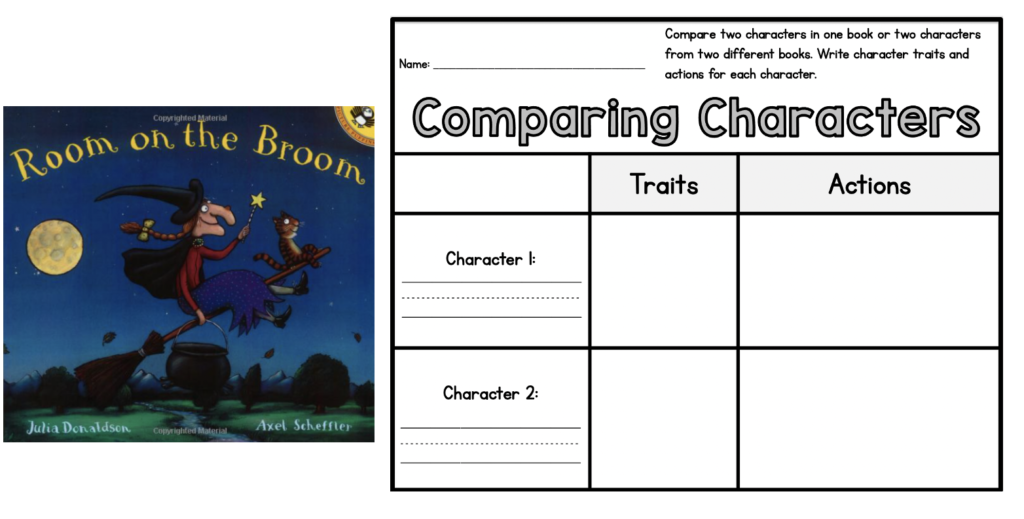
Character Analysis All Year Long
Since fall doesn’t last forever, I made a short list of classic books that would work at any point in the school year.
Mouse Soup is a favorite in my family. In this story, the mouse gets captured by a weasel, who wants to make mouse soup. The mouse convinces him that he needs to add stories to make it taste good. The mouse can be described as clever, while the weasel can be described as foolish or mean.
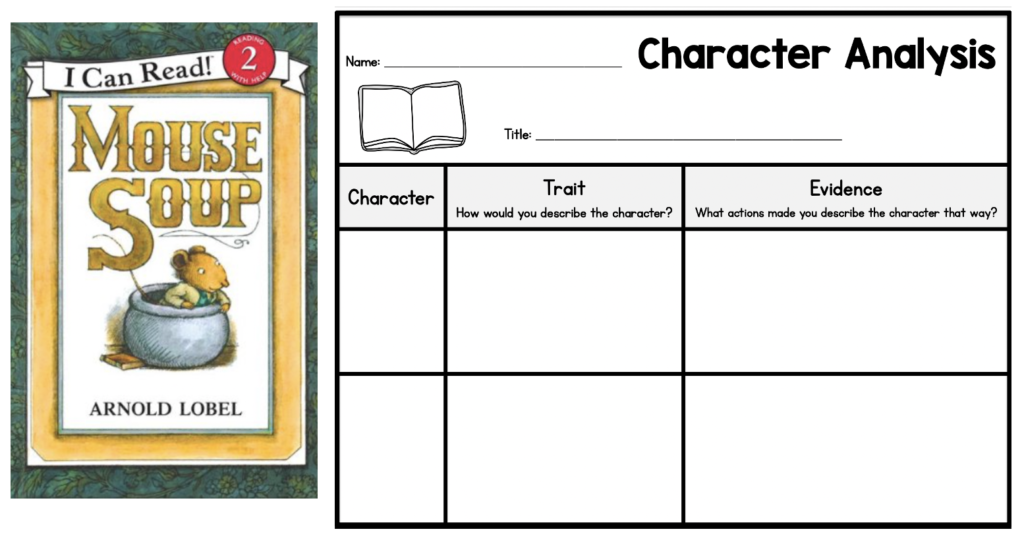
Owl at Home is another family favorite, by the same author. These short stories are actually hilarious for little kids. This book makes my son laugh out loud. Owl is downright silly. My son describes him as “confused”. Ha! As long as they can find text evidence, our students can describe a character however they want!
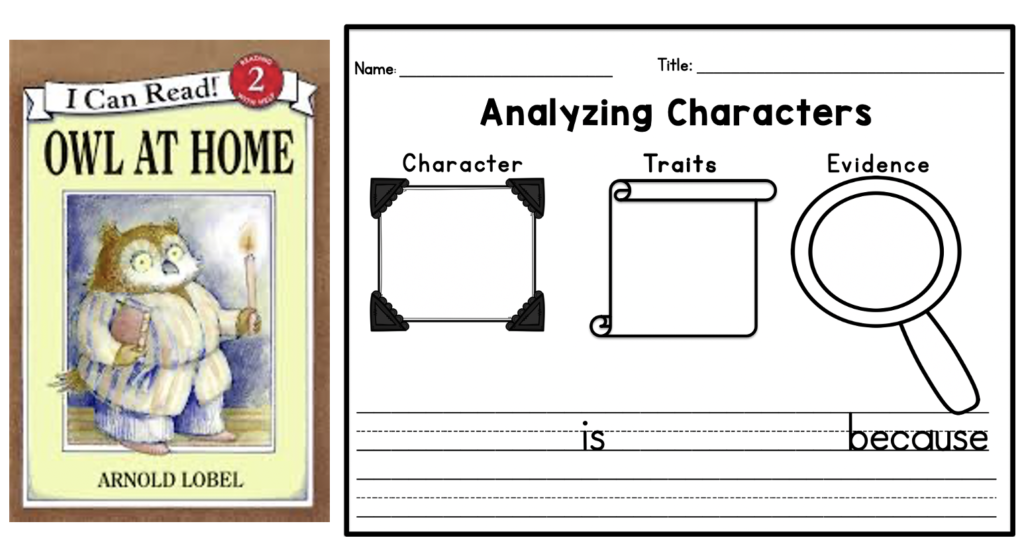
Pretty much any Kevin Henkes book will lend itself to a pretty good character analysis lesson. These two in particular work well. This graphic organizer is used for one character with one main trait. This page leaves it open to have one or more pieces of evidence.
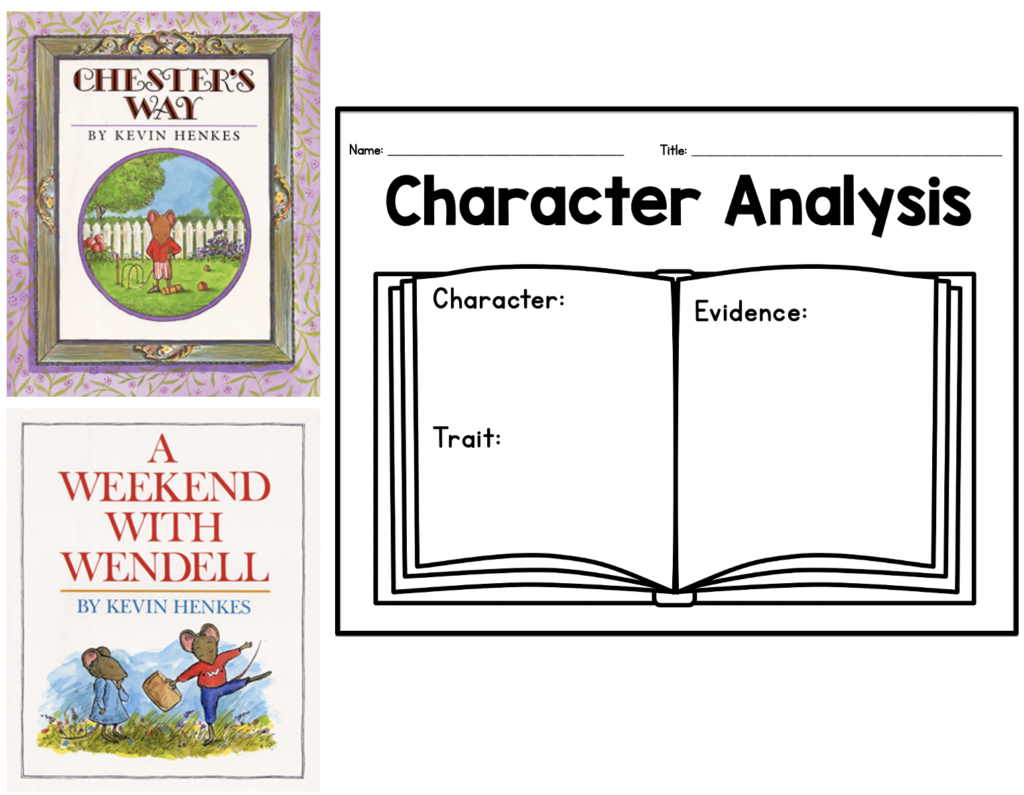
One character, multiple books, more evidence! Kids love these books! Duck is always being mischievous. You can find lots of evidence to back up that claim using several different books. This graphic organizer is used for one character, with one main trait that is evident throughout several books.
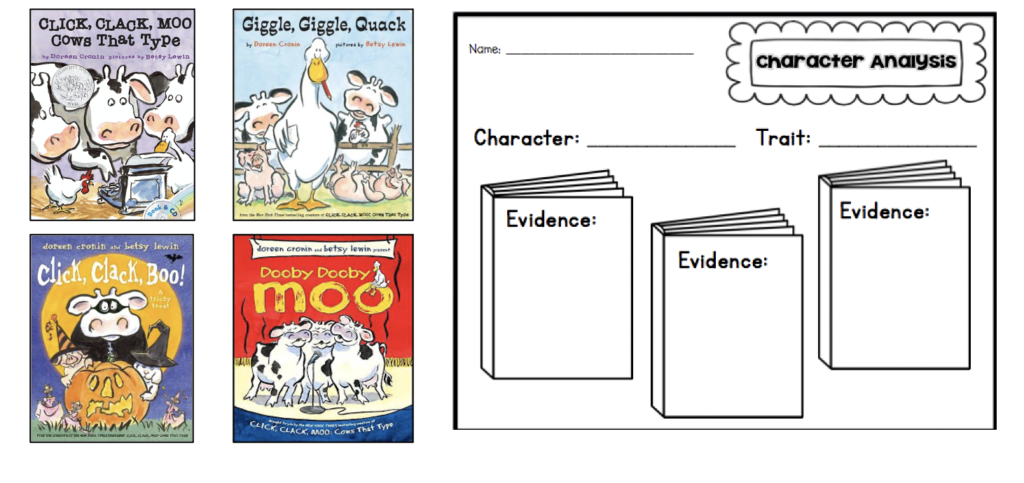
The Pete the Cat series is another series that can do this. Talk about an easy going character! You could read two or more different Pete the Cat books and then use one piece of evidence from each book. This graphic organizer allows you to give one character trait for one character and then asks you to provide three pieces of evidence to support it. Since there are several Pete the Cat books, you could pick one from each book.
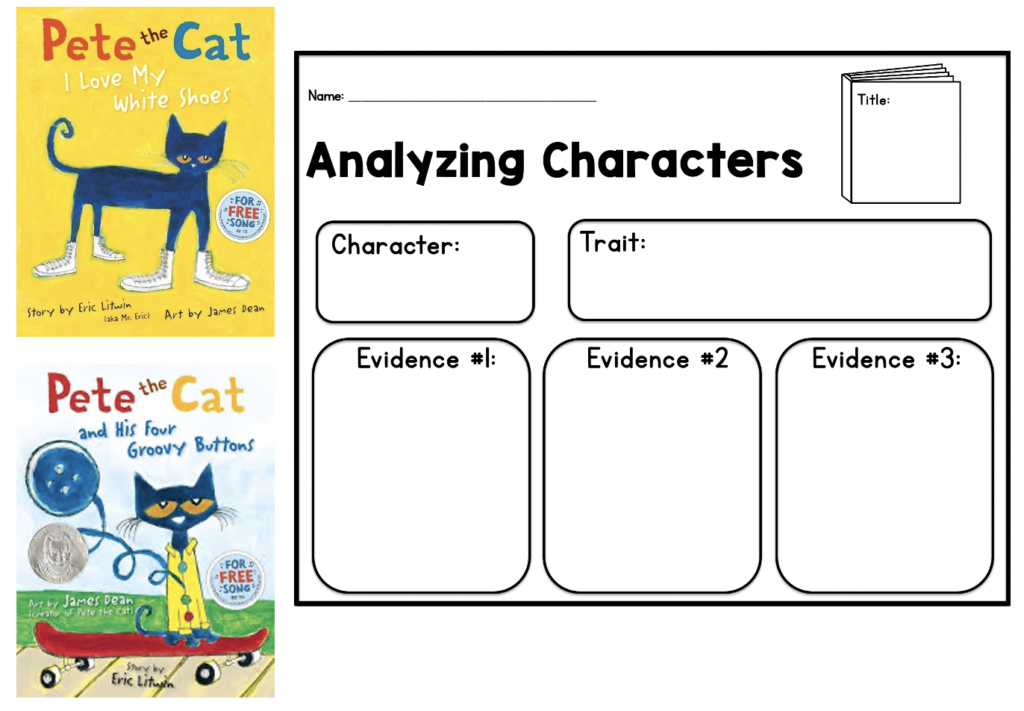
Free Character Analysis Resources
Here’s a list of character traits.
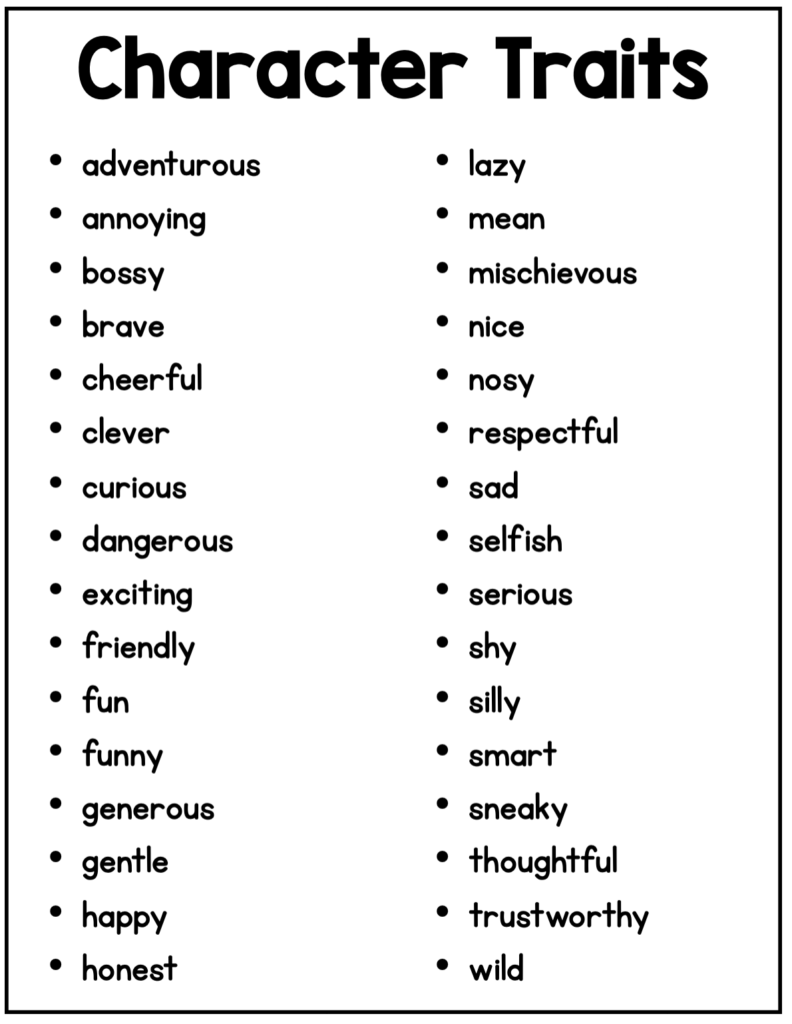
You can get these three FREE graphic organizers and list of character traits here.
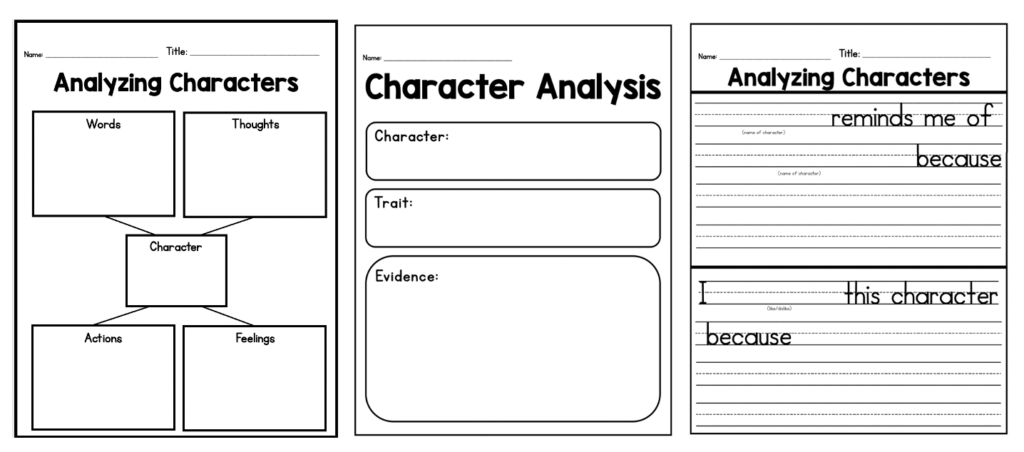
Want more? Click here to sign up for my newsletter to snag all of these for free!
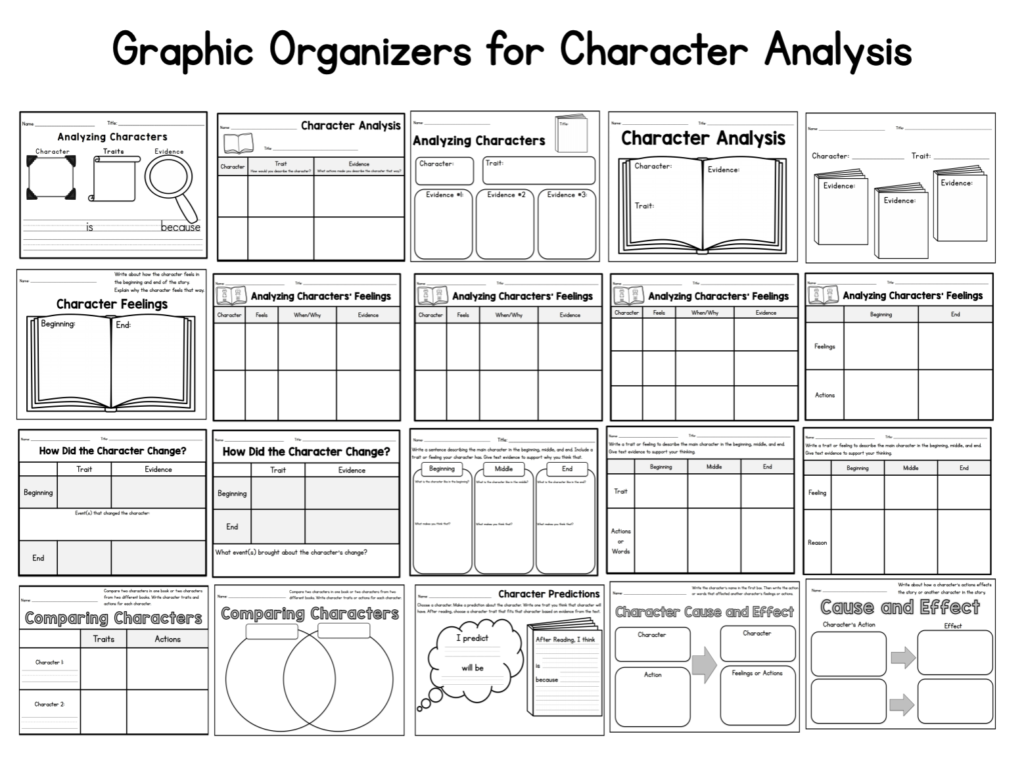
More Character Analysis Resources
Want more resources to teach character analysis? I’ve made a resource for each season. There are short stories to practice choosing a trait and giving text evidence. Plus there are a few more graphic organizers to use with your read-alouds.
To see these, click here.
